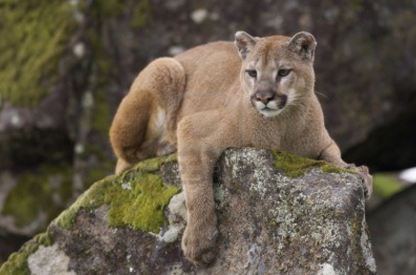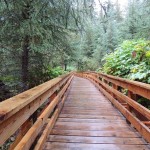Mountain lions, also known as cougars, catamounts, pumas and panthers, once had a wide distribution across North America in all lower 48 states and from British Columbia to the tip of South America. However, due to attempts at eradication (from fear and misconceptions) and development encroaching on their habitat, the population of these large predators has declined and moved mostly to the West coast of North America.
In recent years their population has increased somewhat in California, Colorado and Canada. So if wherever you are doesn’t start with a “C” you can breathe easier.
You may not spot a mountain lion in the Allegheny or Catskill Mountains yet, but they are now increasing their range and moving eastward again. Since RVers tend to be mobile, odds are that on a future trip you may visit a mountain lion habitat. If so, follow these general rules.
- Mountain lions are rarely seen by humans in the wild (80 percent of mountain lion sightings are actually something else, like bobcats or large dogs).
- When hiking in mountain lion territory, hike in a group as most attacks have been to solo hikers or runners, keep pets on leash, and small children close.
- If you sight a cougar and it does not run away—which it most likely will—take aggressive action:
- Make yourself appear as large and threatening as possible: If you are with a small child, put him/her on your shoulders.
- Hold your backpack over your head, raise your arms and wave.
- Scream threateningly at the animal (most of its prey will run, so your actions will confuse it).
- Throw rocks—but don’t stay bent over too long to pick them up as you will appear small and an easier target.
- If attacked, fight back aggressively.
- After you chase it away, write an article for Good Sam Camping and make big bucks.
Now that you are freaked over confronting a mountain lion, lets take a reality check:You are 10 times more likely to be killed by a dog than a mountain lion, and 2,000 times more likely to be killed by a car. We all seem to be more terrified and afraid of something that we know little about – like mountain lions – which could even deter us from hiking. If this were a rational decision, then we would long ago have avoided pet dogs, and we certainly wouldn’t ride in a motor vehicle.
Consider these annual fatalities:
100 human deaths occur in auto collisions with deer
40 deaths from bee stings.
18-20 people killed by dogs (plus bites on 200,000 people).
12 deaths from rattlesnake bites.
3 deaths from black widow spider bites.
Basic Wildlife Observation Safety
Though not usually life-threatening, most wild creatures in order to survive have discovered how to defend themselves. No wildlife should be approached close enough that they change their behavior to concentrate on you. And don’t even consider chasing after a mountain lion or moose to snap a photo. Just because wildlife allow you to approach closer in National Parks, where they are safe from hunters, they are still wild. And no wildlife should be fed, cut off from escape routes, or separated from their babies. They can fight, stomp, claw, bite – which can lead to you being stuck with needles (porcupine) or coated with an obnoxious spray (skunk). Stay safe. Observe wildlife from a safe distance. And enjoy your hike – and, if you are fortunate, you may actually spot a mountain lion in the wild.
You can find Bob Difley’s RVing ebooks on Amazon Kindle.



bill shelton
Cougar HAVE been seen in Illinois, Indiana, Missouri, Iowa. I live in south eastern Illinois and have seen two. Then of course there is that news video where they were looking for one in Chicago, it winds up walking across the screen behind the officer.